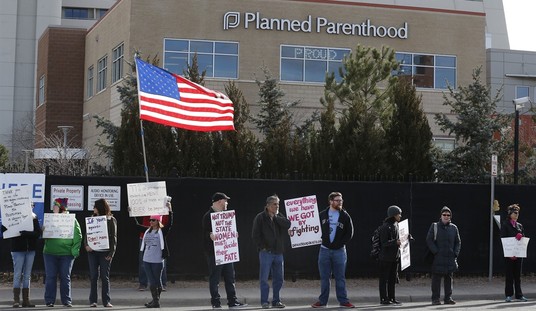The May jobs report showed that job creation in the US economy has lost ground in relation to population growth, but did we actually have a net loss of jobs last month? A Johns Hopkins professor wrote an analysis for the Brookings Institution with that conclusion. Rather than a net gain of 38,000, we actually lost 4,000 jobs, and inaccurate seasonal adjustments obscured the actual results:
Nonfarm payrolls actually declined 4,000 during the month, according to Jonathan Wright, a Johns Hopkins economic professor who wrote an analysis Friday for the Brookings Institution, a generally left-leaning think tank.
That number compares to the already-dismal 38,000 count released Friday morning from the Labor Department. The report triggered a decline in the stock market and, perhaps more importantly, a sharp drop in expectations for interest rate hikes this year.
Wright said he arrived at his number by diverging from the government in the way seasonal adjustments are made to the numbers. Whereas the Bureau of Labor Statistics “puts very heavy weight on the current and last two years of data,” the Wright method involves going back over six years to measure seasonal patterns, “which makes them more stable over time than in the current BLS seasonal adjustment method,” he wrote.
No matter which measure gets used, the results over the last three months look poor:
Over the past three months, the BLS count has showed average growth of only about 116,000, with March and April revisions subtracting 59,000 from the initially reported numbers. The Wright method puts that average at an even gloomier 107,000 and just 114,000 for all of 2016.
“Unfortunately, neither the alternative seasonal adjustment, nor the weather adjustment, makes today’s jobs report any more hopeful,” Wright wrote. “They make little difference and, if anything, make the picture more gloomy.”
The three-month averages, in either calculation, demonstrate the decline in job creation. As noted on Friday in the jobs-report analysis, the US population grows at about 2.5 million people per year. To keep up with that growth at current civilian workforce participation rates (the lowest in almost 40 years), we need to add 131,000 jobs a month; at healthier CWP rates, it should be more like 136,000. That’s just what’s needed to maintain the status quo — anything less than that is a decline when factoring in population growth.
Over the last three months, we’ve fallen short of the more modest goal by at least 15,000 jobs a month for three straight months, on the BLS calculation. Using Wright’s seasonal calculations, we have declined by 24,000 jobs a month for the last three months, or 15,000 a month for each of the last five months on average. We are losing ground each month.
That will leave the Fed with some egg on their faces. They had planned on rate hikes based on their predictions of strong economic growth and job creation. Fed chair Janet Yellen will speak today at the World Affairs Council of Philadelphia, and plenty of people will be waiting for an explanation:
Yellen’s speech to the World Affairs Council of Philadelphia at 12:30 p.m. ET (1630 GMT) will address the economy and monetary policy, and is the last public comment by U.S. central bankers before their June 14-15 meeting.
The chances of a rate hike at that meeting were all but killed by a report showing the U.S. economy added only 38,000 jobs in May, muting recently upbeat data on consumer spending and overall growth. A sensitive British vote on European Union membership set for later this month is another reason for the Fed to wait. …
Yellen could note that the May report does not necessarily suggest a more permanent gloom for the labor market, where unemployment at 4.7 percent is at its lowest level since the beginning of the recession. On rates, she could repeat her line from a week-and-a-half ago that a rise could be appropriate “probably in the coming months.”
Or she could acknowledge what everyone else knows — that the US has had the worst seven-year recovery period since World War II in both GDP and job creation, and that it’s not getting any better despite all of the quantitative easing done by the Fed. The problem is regulatory and statutory impediments on growth and investment, not monetary supply policies.
Update: Changed “control” to “growth” in the first paragraph.







Join the conversation as a VIP Member